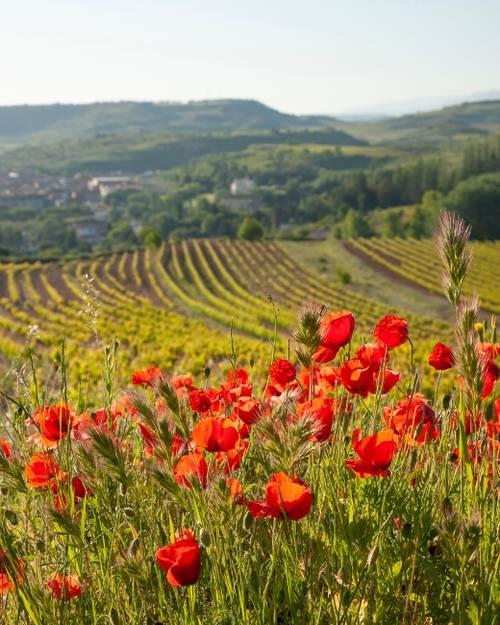Grape varieties and blending
Black-skinned grape varieties make up over 90% of all Rioja's vineyard plantings and the undoubted king of the crop is Tempranillo, which accounts for over 85% of all vineyards. It is an ancient grape variety, found under many synonyms across the Iberian Peninsula, from Portugal's Douro Valley to Spain's high Meseta, but arguably makes its greatest expressions in Rioja.
Tempranillo is a relatively thin-skinned, early ripening grape variety that offers ripe red fruit flavours and tannic structure to a wine. It ages well in oak barrels and readily takes on a spiced, leathery complexity from contact with wood.
Tempranillo can make excellent single-varietal wines but will often be blended with other permitted black grape varieties, such as Grenache, Graciano and Mazuelo.
Rioja also produces excellent white wines (Rioja Blanco) although they make up just 10% of the wine production. White Rioja is typically made with the Viura grape variety and, as with the red wines, is traditionally aged in American oak barrels.


.jpg?v=1764756873915&options=w_300)






.jpg?v=1697818294347&options=w_500)




